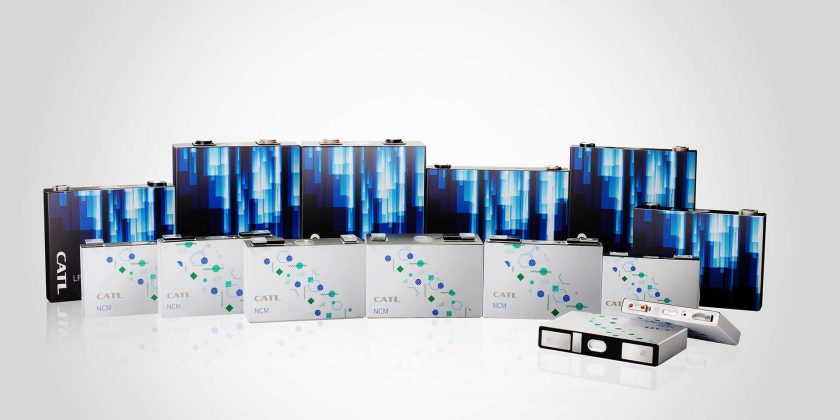The global passenger xEV (BEVs, PHEVs, HEVs) battery market significantly expanded in 2021, reaching a new record level.
According to Adamas Intelligence, in 2021 about 286.2 GWh of battery capacity was deployed onto roads globally in all newly sold passenger xEVs. It’s an 113% increase year-over-year, compared to 134.5 GWh estimated for 2020.
Batteries for commercial xEVs, energy storage systems or other applications are not included in the numbers.
Battery capacity deployment increase appears to be slightly quicker than the increase of vehicle sales, because besides the increase in the number of battery packs, also the average battery capacity continues to increase.
Top battery manufacturers – 2021
According to the report, CATL took a clear lead in 2021, over LG Chem’s LG Energy Solution and Panasonic. The three biggest players have a total market share of about 67.4% (compared to 71% in 2020).
With almost 87.8 GWh deployed (up 204% year-over-year), CATL controls close to a third (30.7%) of the entire passenger xEVs battery market. CATL’s business is mostly focused on China.
LG Energy Solution noted a 72% year-over-year increase to 63.5 GWh, which is enough for 22.2% share. Most of the sales were reported in Europe.
Panasonic also increased its volume (by 39% year-over-year) to 41.4 GWh, which is 14.5% of the total. Most of the sales fall on North America.
The top battery cell manufacturers:
- CATL – 87.8 GWh (30.7%)
- LG Chem’s LG Energy Solution – 63.5 GWh (22.2%)
- Panasonic – 41.4 GWh (14.5%)
- BYD – 24.2 GWh (8.5%)
- Samsung SDI – 15.1 GWh (5.3%)
- SK Innovation’s SK On – 14.6 GWh (5.1%)
- CALB – 10.3 GWh (3.6%)
- Gotion High-Tech Co. (Guoxuan) – 6.8 GWh (2.4%)
- Envision AESC – 3.5 GWh (1.2%)
- Farasis Energy – 2.1 GWh (0.7%)
- other – 16.8 GWh (5.9%)
- Total 286.2 GWh (only passenger xEVs)
A very interesting bit of information in the Adamas Intelligence’s report is the share of batteries that the largest manufacturers sent to Tesla.
Tesla alone was responsible for 23% of the total passenger xEV battery capacity deployed onto roads globally (down from 26% in 2020), which means about 65.8 GWh.
- CATL: 21% of batteries went into Tesla cars. We assume that’s mostly for Made-in-China (MIC) Model 3/Model Y with LFP battery cells, but let’s not forget that the LFP were also used in the US recently.
“In 2021, 21% of all passenger EV battery capacity deployed onto roads by CATL went into MIC Tesla Model 3s and Model Ys, making Tesla the cell supplier’s widest channel to market for the calendar year.”
- LG Energy Solution: 19% of batteries went into Tesla cars.
NCM (maybe also NCMA) 2170-type cells, mostly for Made-in-China (MIC) Model 3/Model Y. There were reports about California-produced cars with LGES batteries in the past, but we can’t verify the scale.
“Similarly, in 2021, 19% of all passenger EV battery capacity deployed onto roads by LG Energy Solution went into MIC Tesla Model 3s and Model Ys, making it the cell supplier’s second greatest channel to market for the calendar year after Volkswagen Group.”
- Panasonic: 87% of batteries went into Tesla cars. It’s a very high dependency on a single customer (only slightly lower than in 2020, when it was nearly 90%). Panasonic previously hinted in March 2021 that the company must reduce its “heavy” reliance on Tesla.
“Moreover, in 2021, 87% of all passenger EV battery capacity deployed onto roads by Panasonic went into Tesla battery electric vehicles of all kinds, making it by far and large the cell supplier’s widest channel to market for the calendar year.”
Average passenger plug-in battery capacity
According to the report, the average battery capacity in passenger plug-ins (excluding non-rechargeable hybrids) is between 49 and 59 kWh, as far as the three top manufacturers are concerned:
- Panasonic: 58.4 kWh
- CATL: 52.8 kWh
- LG Energy Solution: 49.5 kWh
Panasonic is higher than CATL and LGES because it focuses on a very energy-dense chemistry (NCA) used in Tesla’s Long Range cars (Model S/X and Long Range Model 3/Y in the US).
Source: Adamas Intelligence
- Share on Facebook
- Share on Twitter
- Share on LinkedIn
- Share on Flipboard
- Share on Reddit
- Share on WhatsApp
- Send to email
Source: Read Full Article



